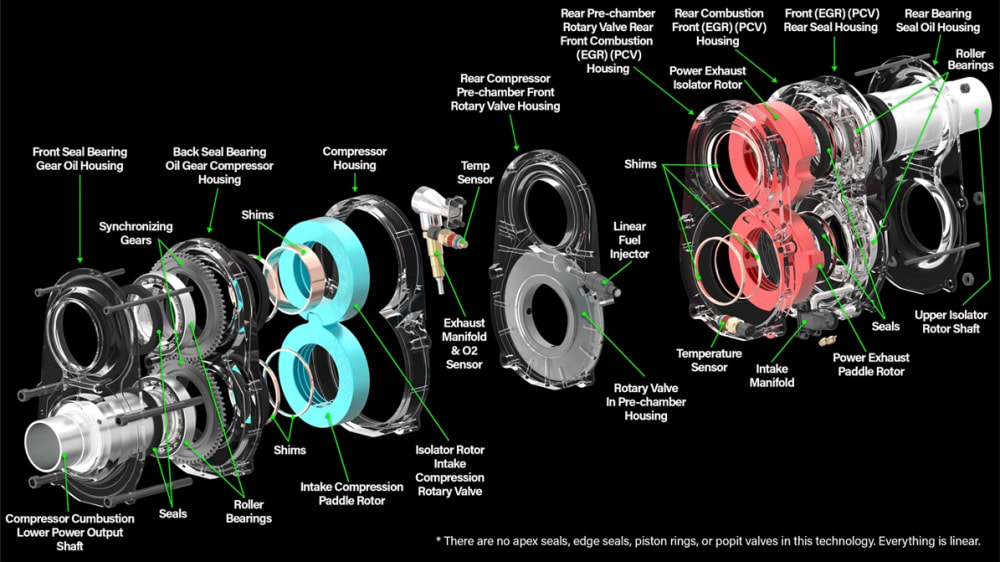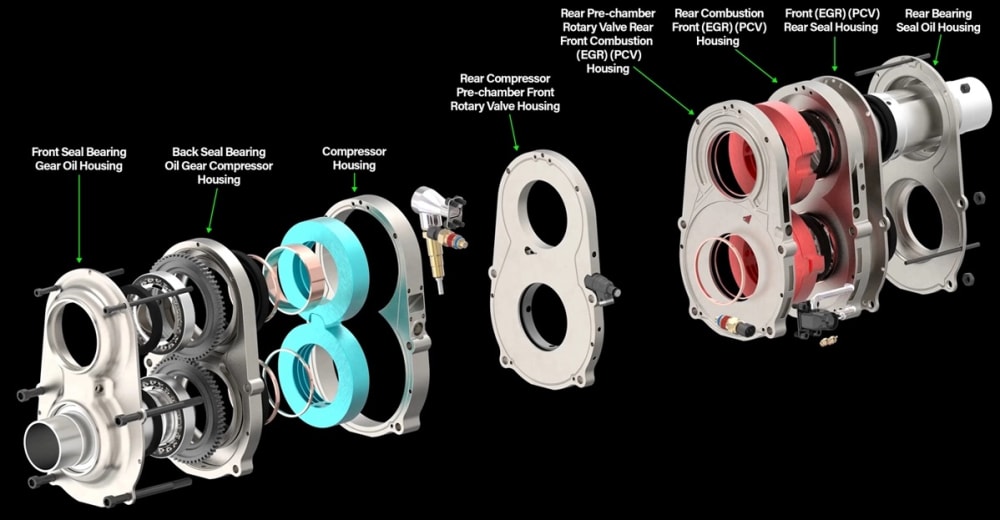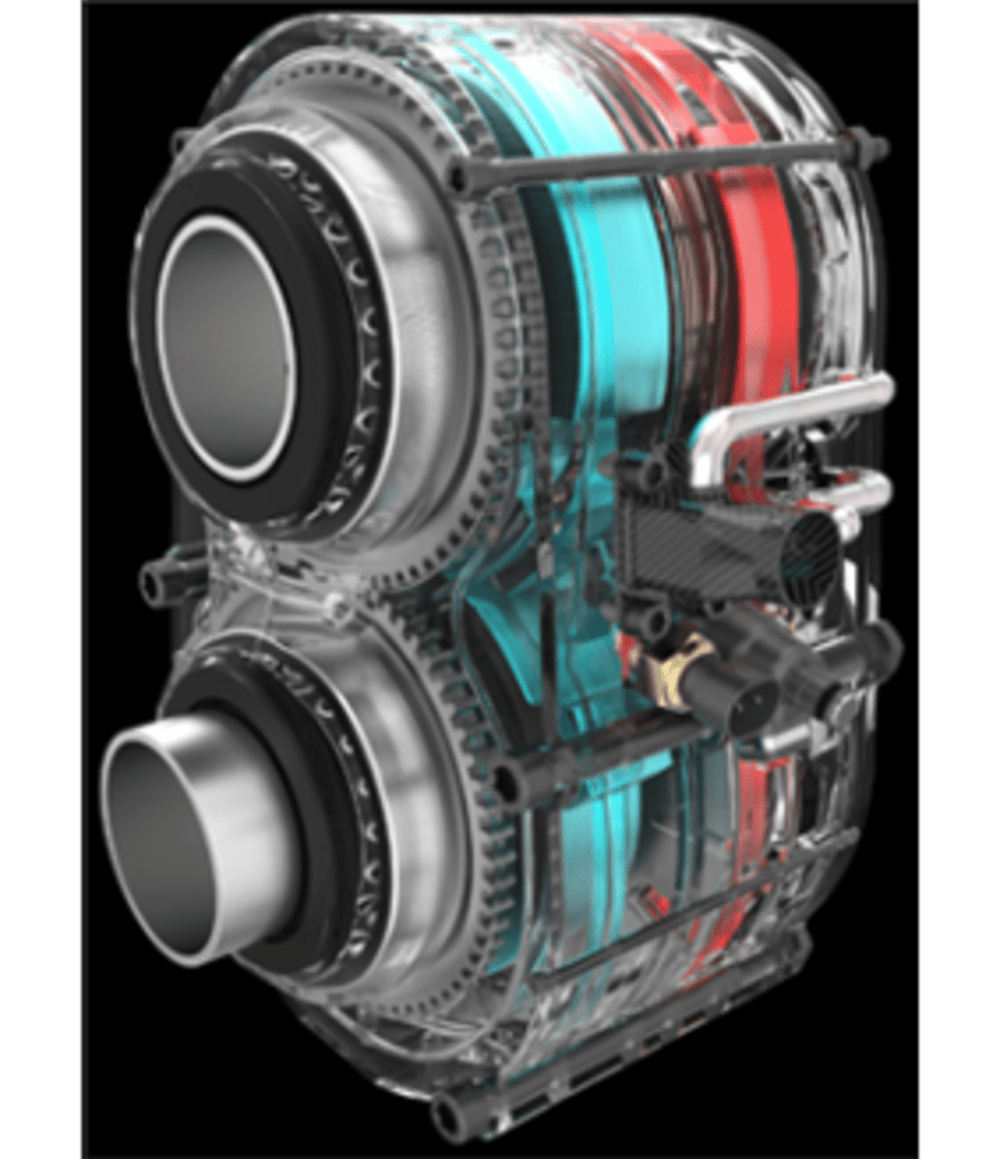

Revolutionary Astron Omega 1 Rotary Hydrogen Engine
The novel Omega I engine features a high power-to-weight ratio, high rpm capability, low friction and fuel consumption, simplicity (only two rotating assemblies), and can run on both liquid and gaseous fuels. It is particularly well suited to hydrogen and HCCI operation for near zero emission operation, as there is no potential for oil contamination and combustion hot spots are eliminated, allowing for potential HCCI operation. Hydrogen is directly injected into the prechamber, eliminating the power losses associated with port injection of conventional hydrogen IC engines. By operating at less than half the hydrogen stoichiometric ratio, harmful emissions (e.g., NOX) are essentially eliminated. The design is modular (allowing multiple rotors), scalable to various applications, and can be manufactured using existing machine tools.
This unique, patented design de-constructs the four stoke otto cycle, combines it with turbofan technology and incorporates a pre-chamber for homogeneous charge mixing. Air is compressed by the intake rotors and supercharged into the prechamber, where fuel is injected and allowed to mix for over 270 degrees of rotation. The charge is then released into the chamber of the combustion rotors through a simple rotary valve integral with the primary rotating assembly. Combustion is initiated by either a glow or surface gap plug until HCCI operation is achieved, and exhausted through a peripheral exhaust port. Like turbofans, there are no seals for low friction, and tight radial clearances minimize internal leakage under high-speed operation. Parasitic losses are minimized by this air-cooled engine, eliminating cooling or valvetrain losses, so that friction is essentially limited to the four roller bearings of the two rotor assemblies. Operating principles can be seen in the accompanying video, and exploded views of the Omega I. The total Global IC market is over $700B. Electrification will inevitably limit this market, but we believe Omega 1 has the potential to dominate stationary and mobile applications where electrification is not practical or economically feasible.
Omega I is covered by multiple patents. It was designed using Solid Works. Computer simulations were used to optimize design parameters. A proof-of-concept prototype shown in the video demonstrated concept feasibility, and prototype Omega engines are now being assembled for dynamometer testing, data acquisition, simulation correlation and engine optimization. Development and production contracts have been initiated for defense and vehicle applications pending verification of test results.
Omega I’s mechanical simplicity reduces part count so component cost will be significantly lower than comparable IC engines. In fact, part count is comparable to a single cylinder 4-stroke IC engine. Additionally, assembly labor is lower, and manufacturing investment reduced by taking advantage of existing IC manufacturing processes.
In summary, Omega 1 has the potential to improve the state-of the art by providing a new, smaller, more powerful, and efficient IC engine with significantly reduced green-house gasses. It will enable new and exciting applications as well as improve existing transportation and power generating uses. Further details can be seen at https://astronaerospace.com/
Video
-
Awards
-
 2022 Automotive/Transportation Honorable Mention
2022 Automotive/Transportation Honorable Mention -
 2022 Top 100 Entries
2022 Top 100 Entries
Like this entry?
-
About the Entrant
- Name:Chris Theodore
- Type of entry:teamTeam members:Matthew Riley, Founder and CEO Astron Aerospace
Chris Theodore, Executive Technical Advisor to CEO - Software used for this entry:Solid Works
- Patent status:patented








